Table of Contents
Today, we’re diving belly-deep into the fascinating topic of re-piercing your belly button. I know, right? You’d be surprised how often I get this question: “Tori, I’ve had this belly button piercing before, can I get it pierced again?”
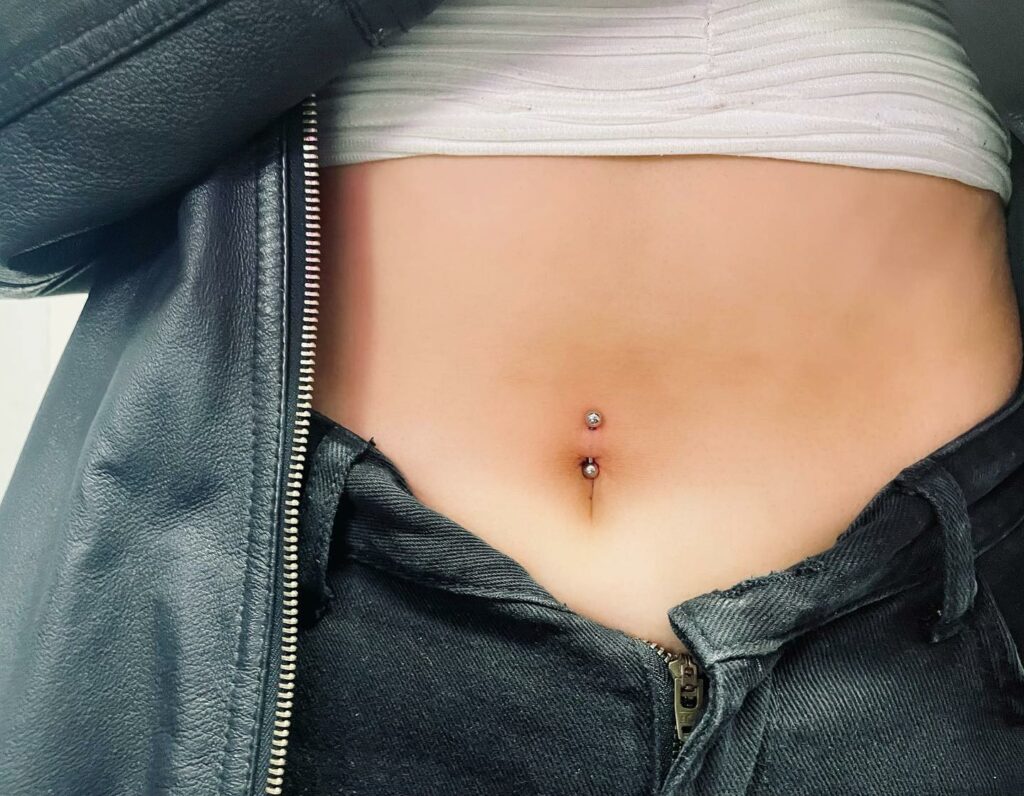
This post will be your comprehensive guide to everything you need to know about re-piercing your belly button. We’ll explore the what, why, and how of it all – what to consider before going for that second plunge, why some belly button piercings close up, and how a professional like myself handles the task of re-piercing. You’ll learn about possible complications, how to prevent them, and what aftercare to follow for a quick and painless healing process.
So whether you’re an erstwhile belly-button bedazzler yearning for a navel rerun, or simply a devoted follower of body modification art, this one’s for you. This is the deep dive into the skin you’ve been waiting for, filled with pearls of wisdom (or should I say, “navel gems”?) that are going to help you navigate the ocean of re-piercing with confidence and grace.
The Belly Button Chronicles: Re-Piercing Tales
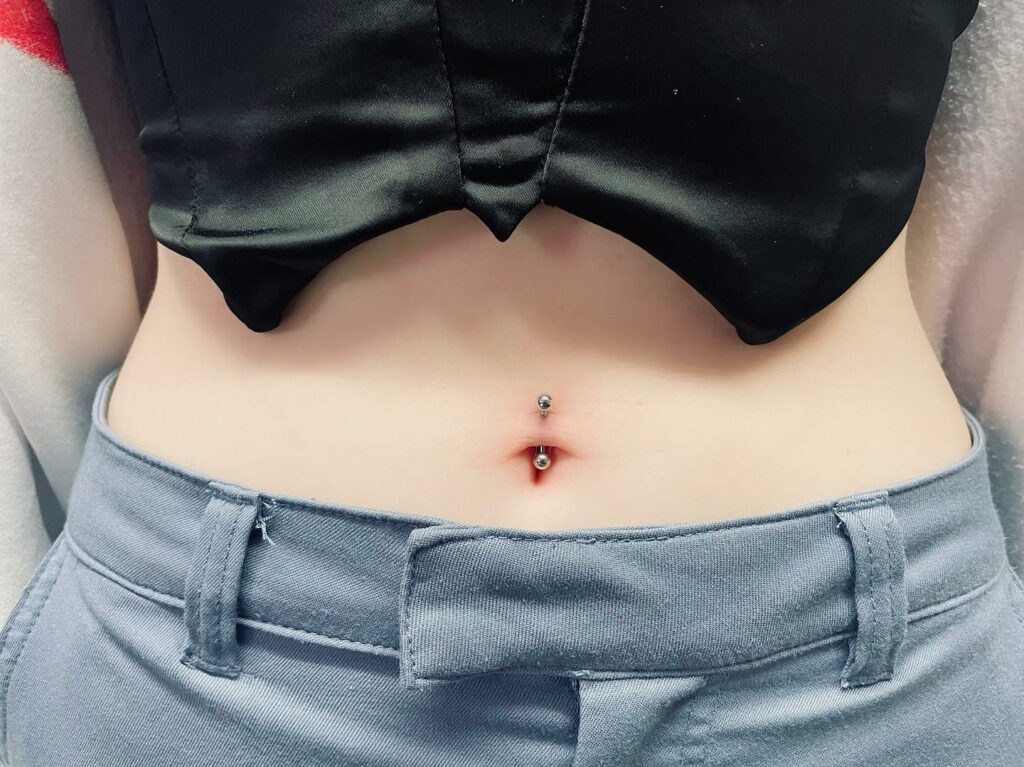
Ever caught yourself in a nostalgic reverie, reminiscing about the good ol’ days of sporting that cool navel ring, complete with dazzling gems or an eclectic mix of metallic hues? Ah, the beauty of piercings lies in their transient nature — you can choose to bid them adieu when you wish. Often, all that’s left is a tiny, discreet mark, but sometimes, due to unforeseen circumstances, our piercing buddies may pack up and leave entirely.
Dust off those worries because re-piercing your belly button is absolutely doable. Let’s delve into the why’s and how’s:
Why Go for Round Two: The Belly Button Re-Piercing Rationale
The reasons behind re-piercing your belly button are as varied as the belly buttons themselves:
- Jewelry rejection or migration
- Tearing or stretching
- Infection or allergy
- Removal or changing of jewelry
Why Did It Close and Can It Be Redone?

Belly buttons are as unique as fingerprints, and this uniqueness is the first factor any piercer would scrutinize. In rare instances, the previous piercer might have been green around the gills, resulting in a shoddy piercing job and low-quality jewelry. By examining your navel, we can figure out if a belly ring encore is a sound decision.
Jewelry Rejection or Migration
Remember that time when your original piercing seemed to play hide-and-seek, shifting from its initial spot to a higher, more superficial location? You may have dealt with the unwanted guests of swelling, redness, and discharge, eventually deciding to say farewell to the piercing.
The reason behind such migrations is your body’s in-built defense system trying to evict the foreign invader — the jewelry. Even a minor bump could trigger this defensive response. If your previous area has a lot of scar tissue from such migrations, re-piercing might not be the best idea. But here’s the silver lining: you’ve got both a top and bottom area of your belly button to work with.
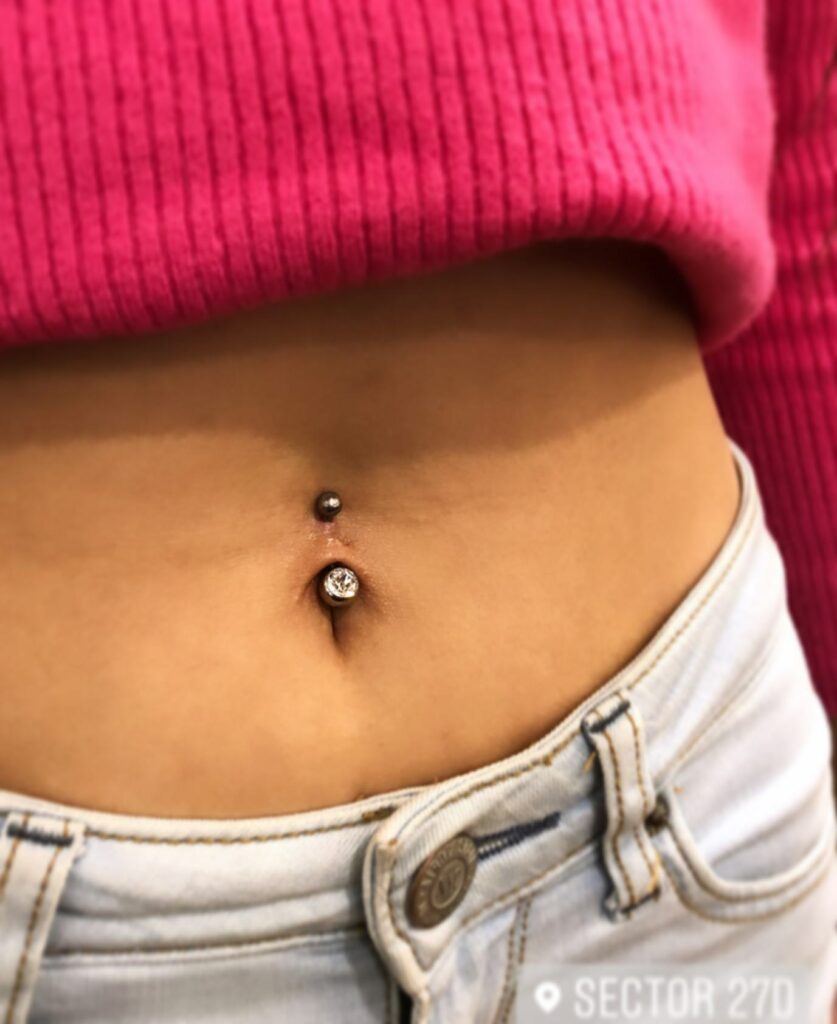
Tearing or Stretching
Imagine this: you’re in the midst of an intense clothes-changing session, and then – ouch! – a pesky thread catches on your piercing. Been there, felt that! More often than not, it’s a fleeting moment of pain with no lasting damage. However, there could be times when the hole widens or, in worse scenarios, the jewelry yanks free, leaving a lesion behind. If you’ve got a generous amount of scar tissue from such incidents, re-piercing might be a challenge.
Infection or Allergy
These two culprits often send people scurrying to remove their jewelry. It could be the aftermath of unsterilized piercing equipment, poor aftercare, or even a negative reaction to the metal quality. If you’re allergic to a particular metal, a suitable alternative can easily be sorted out when you decide to re-pierce. If you had a severe infection previously, it’s essential to assess the scar tissue level.
Removal or Changing of Jewelry
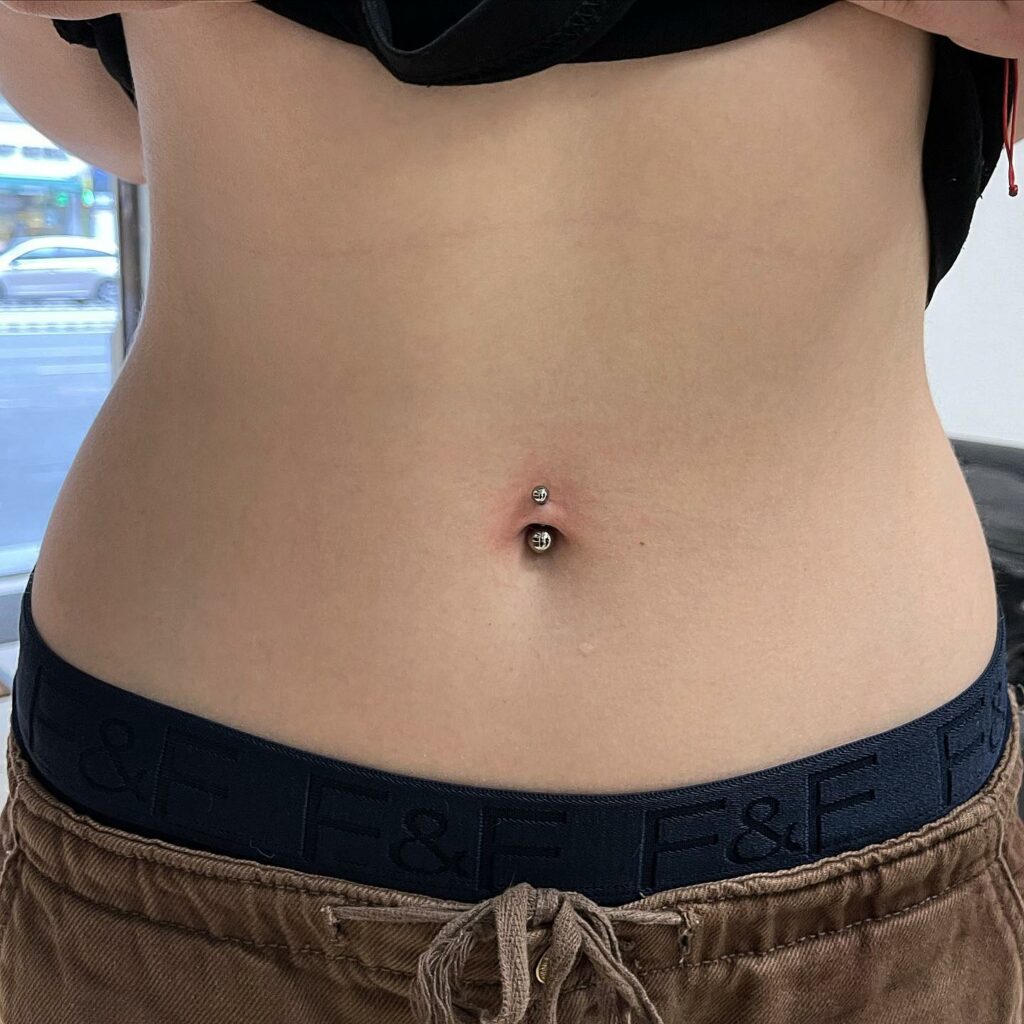
There could be numerous reasons why you had to part ways with your navel piercing:
- You had to prevent an injury during an exercise session
- The piercing just dropped out unnoticed
- You might have flouted the advice not to change the jewelry
In case the hole closed up, don’t play hero trying to force the bar through. Trust a professional to handle this. Yes, waiting for it to heal and then getting it re-pierced might test your patience, but it’s the most straightforward fix. If your hole has shrunk over time, a professional can help widen it to accommodate a new navel ring.
Pin-Point Your Decision
If you’re all set to give re-piercing a shot, invest time in finding a professional and hygienic body piercer who boasts glowing reviews. Don’t hesitate to ask questions about the jewelry’s metal and request them to inspect the previously pierced skin.
A critical aspect of ensuring your piercing heals well is adhering to your piercer’s aftercare advice. It’s worth investing in a top-notch aftercare solution to aid recovery. My personal favorite is the After Inked Piercing Aftercare Spray. It’s vegan-friendly, alcohol, and additive-free, and works wonders on all skin types, including sensitive skin. Plus, it comes in an easy-to-use, generous mist-spraying bottle.
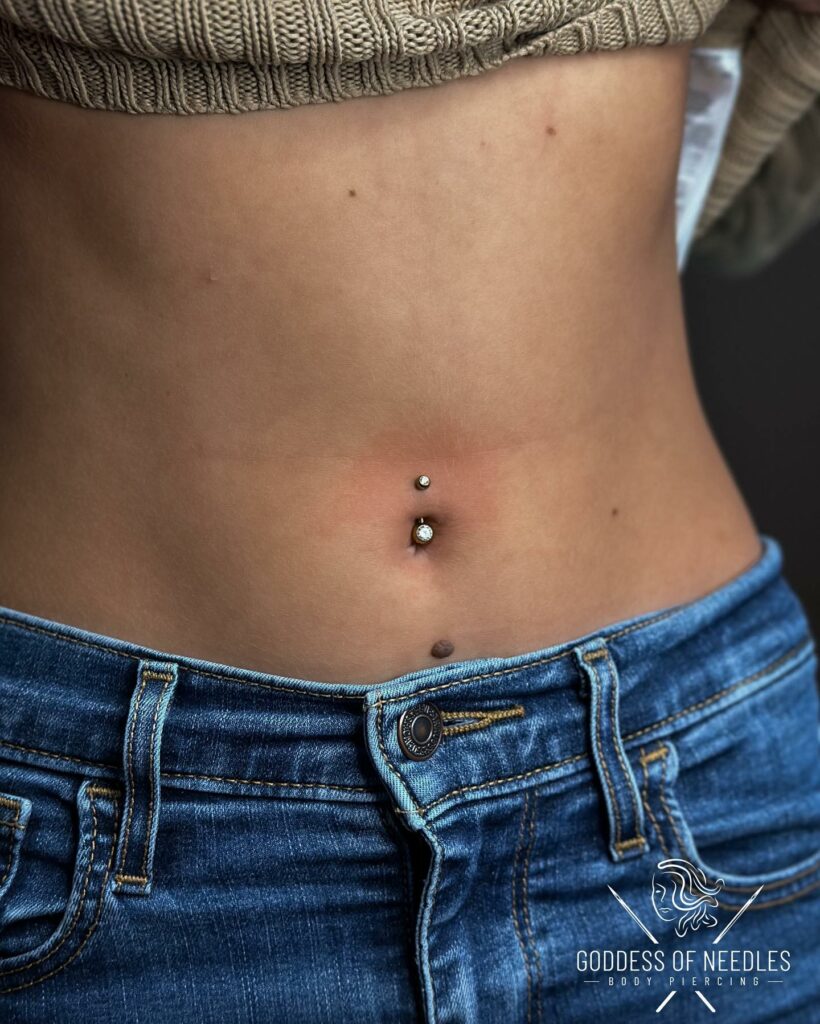
While re-piercing a belly button does carry some risks, with the right precautions, it’s a relatively safe procedure. Always ensure you’re making an informed decision and remember that the health and safety of your body should always come first.
Proper Aftercare Is Crucial – Follow These Tips
Here’s a step-by-step guide to ensure a smooth healing journey:
- Cleanliness is Key: Wash your hands thoroughly before touching the piercing or changing the jewelry to avoid introducing bacteria to the area.
- Saltwater Soaks: Use a saline solution (sea salt dissolved in warm water) to clean the piercing. This can be done twice a day by soaking a cotton ball in the saline solution and gently pressing it against your belly button. Alternatively, you can use a pre-made piercing aftercare saline spray.
- Avoid Irritation: Try not to twist, turn, or slide the jewelry while the piercing is healing. Also, be careful with your clothing choices. High-waisted pants or belts that press against the belly button should be avoided.
- Steer Clear of Harsh Cleaners: Avoid cleaning the area with alcohol, hydrogen peroxide, or antibacterial soaps, as these can be too harsh and delay healing.
- Don’t Over-clean: Cleaning more than twice a day can actually irritate the piercing and slow the healing process.
- Monitor the Healing Process: Keep an eye on your piercing as it heals. Some redness, swelling, and clear or white discharge can be normal. However, if you notice signs of infection (such as increased pain, persistent redness, dark-colored discharge, or fever), seek medical advice promptly.
- Patience is a Virtue: Remember, healing takes time. The healing process for a belly button piercing can take anywhere from 6 months to a year.
- Healthy Lifestyle: Maintaining a healthy lifestyle will help your body heal faster. This includes getting enough sleep, eating a balanced diet, and staying hydrated.
Remember, each person heals at their own pace and your healing process may be different from others. When in doubt, always consult with your professional piercer or a healthcare provider.
Conclusion
So, there you have it, folks – your belly button, and the wonderful world of re-piercing it. Remember, the location of the new piercing might need to be adjusted depending on your unique anatomy and any scar tissue that may have formed. Costs can vary significantly based on the studio and location, but you should expect to invest somewhere between $30-$70 for a safe and professional experience. Beware though, re-piercing, like any body modification, comes with potential risks, such as infection, allergic reaction, or further scar tissue development. Make sure you’re fully informed, choose a reputable professional, and follow the aftercare advice diligently. While a navel piercing may seem small, it carries with it the potential for big impact – whether as a personal statement, a badge of courage, or simply a nod to your individual style. As with all things, navigate this journey with both wisdom and a dash of daring. Until next time, stay sharp and shine on!




